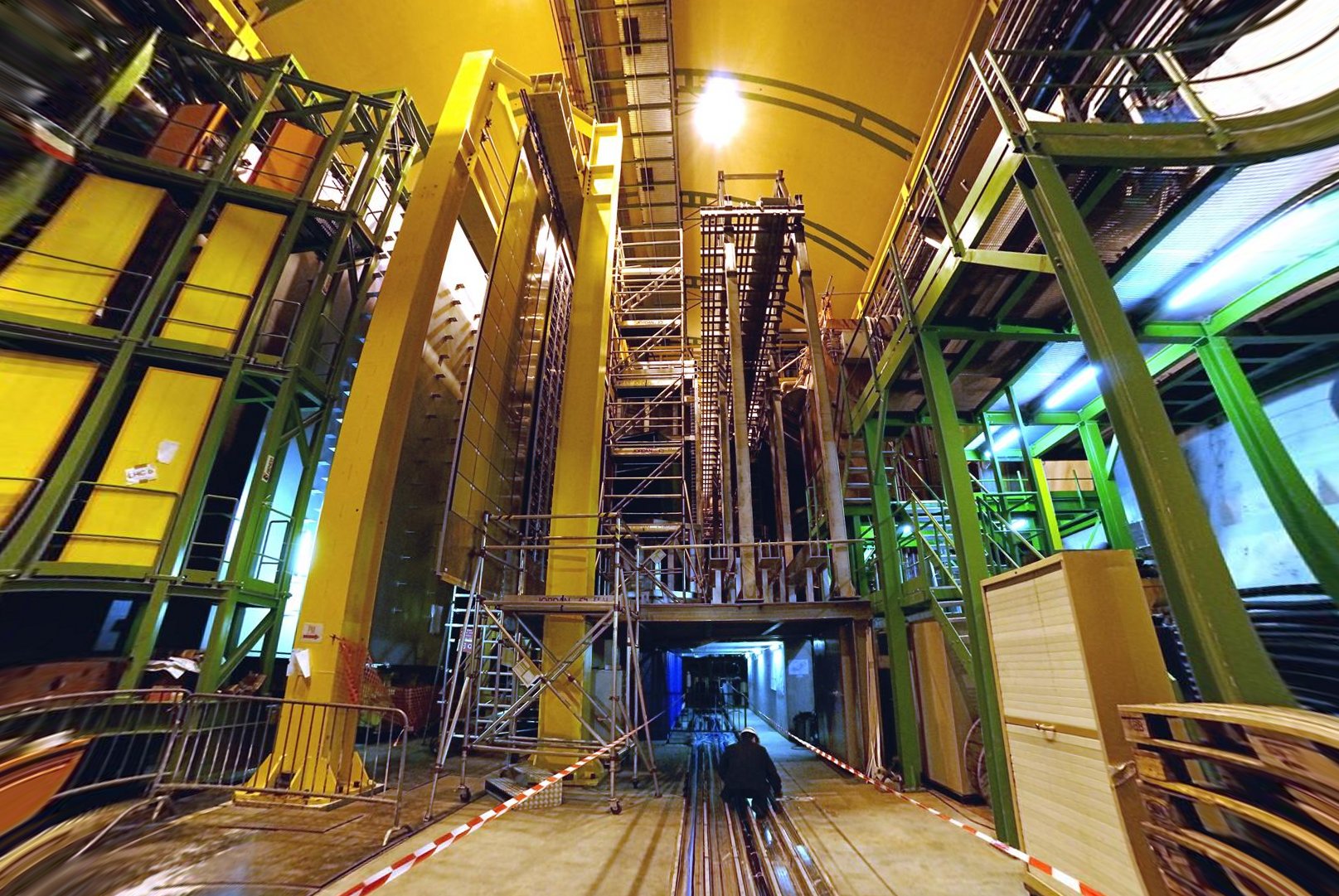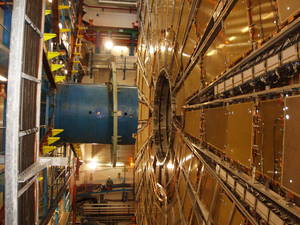Have we found the Higgs Boson?
Interview with
This week saw scientists at CERN announce the discovery of a Higgs' Boson-like particle at the Large Hadron Collider, or LHC.
The existence of the Higgs' Boson has long been part of the so-called standard model of particle physics but until now its existence wasn't confirmed.
model of particle physics but until now its existence wasn't confirmed.
CERN Director General Rolf Heur...
Rolf - We have discovered a new particle. A Boson. Most probably a Higgs' Boson, but we have to find out which kind of Higgs' Boson this is, what are its properties, and where do they point to. But at least, we know now that we can soon close part of the chapter of the standard model. We have now found the last missing cornerstone of it. It's the beginning of a long journey to investigate all their properties.
The discovery answers a long-standing question regarding why some of the fundamental particles in the Universe, like protons and neutrons, and the quarks, leptons and bosons that make them up, actually have mass. The Boson was detected by the CMS and ATLAS experiments.
Professor Joe Incandela is from the CMS experiment...
Joe - This boson is a very profound thing that we've found. Okay, this is not like other ordinary particles. We're reaching into the fabric of the universe, at a level we've never done before, and we're on the frontier now. We're on the edge of a new exploration.
Without the presence of Higgs' bosons located within the Higgs' field which permeates space, sub-atomic particles, such as quarks and leptons, would simply move in all directions at great speed rather than clump together to form matter.
In their search, scientists collided billions of protons every second to release large amounts of energy within which the elusive Higgs' boson could form. Only a small percentage of these collisions lead to the formation of these bosons which then decay rapidly into photons. By studying these photons the CERN scientists have been able to deduce the presence of a new fundamental particle.
Professor Jordan Nash, Head of High Energy Physics at Imperial College London explains...
Jordan - So, the two cleanest ways in which we've seen it and which are the most statistical significance are the events where it produces just two very high energy photons. So these are just two particles of light which smash into our detector very cleanly, and the Higgs' Boson always producing from with exactly its mass. So, by looking at these very, very clean signatures, we can spot it. It's very, very indeed to have such a clean signature, but it's one when you get it, you have the quite high certainty that you've actually produced a real particle.
 The teams detected particles with energy levels indicating a mass of 125-126 GeV , or 133 times heavier than a proton.
The teams detected particles with energy levels indicating a mass of 125-126 GeV , or 133 times heavier than a proton.
The findings build on preliminary results hinting at the presence of a Higgs-like particle that were announced back in December 2011, but now the CERN teams are more than 99.99994% certain of their finding, a level known as 5 sigma.
Jordan - 5 Sigma is a measurement of how statistically confident we are in our measurement being consistent with a signal as opposed to a background. And so, sigma is a measurement of the relative confidence and it comes from a probability distribution where we can have 1 sigma where you have about 1/3 chance of having gotten a computer signal with a background, 3 sigma says you have about 1 part in a thousand chance of doing that, and 5 sigma says you have less than 1 part of a million confusing a signal with background.
This confirmation would revolutionise the world of fundamental physics as well as our own. Dr. Emily Nurse from University College London is part of the Atlas project.
Emily - It's a very fundamental finding for our understanding of the universe. It's very difficult for us to say what it could possibly lead to. All we can say is that we know that our modern world has completely relied on the previous generations doing fundamental research. For example, computers, television, all the sort of medical equipment that we use - MRI scans - all of these things, they all come from understanding the universe better at a fundamental level and that just eventually then leads on to the technology as you trickle down the line.
Confirming the Higgs Boson's existence will also help scientists recreate what must have happened one ten billionth of a second after the big bang in which mass-less particles gained their mass from the Higgs field to form atoms, ultimately leading to the Universe we see today.










Comments
Add a comment